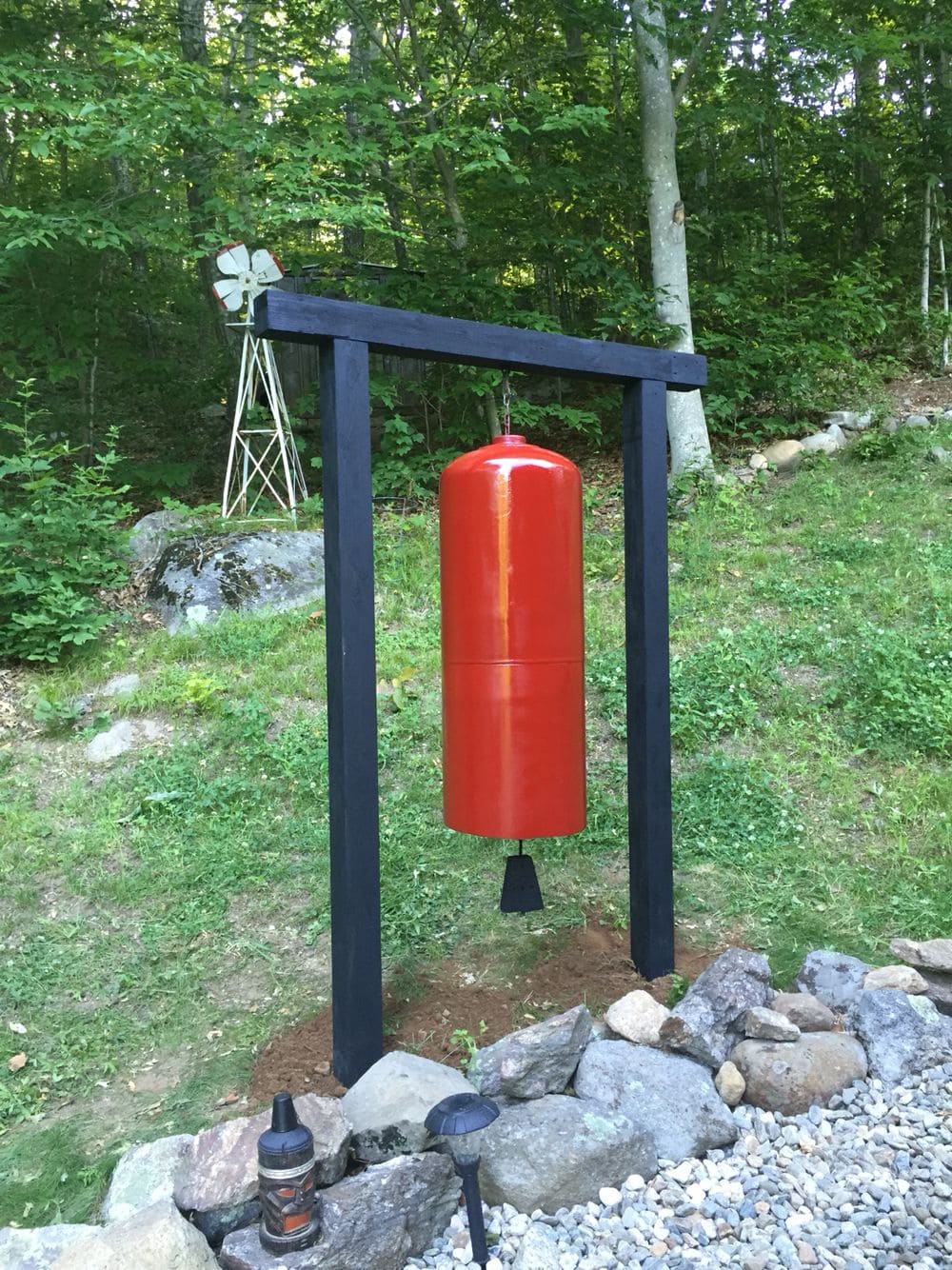
Here’s a DIY project that proves how creative recycling can be. This propane tank garden bell is simple, durable, and makes a bold statement in your outdoor space.
The tank is cut, painted, and hung with a clapper inside so you can strike it to create rich, gong-like tones.
Whether you use it as a quirky yard ornament, a meditation bell, or even just as a conversation piece, it adds character to your landscape while saving scrap metal from waste.
Materials Needed
- 1 empty propane tank (30 lb or larger, thoroughly cleaned and purged)
- Angle grinder with cutting and grinding discs
- Welding machine (optional)
- Metal rod or chain (12-18” long)
- Metal piece for clapper (steel flat bar or pipe section)
- Wood for frame (4×4 posts, 6-7 ft tall, plus a crossbeam)
- Exterior screws or bolts for assembling the frame
- Concrete or gravel
- Outdoor paint (red for tank, black for frame, or any color scheme you like)
Step-by-step Guide
Step 1: Purge the propane tank completely by removing the valve, rinsing with soapy water, and leaving it open for several days. This step ensures safety before any cutting.
Step 2: With your grinder, cut off the rounded bottom of the tank to allow sound to resonate freely. Then smooth out the edges with a grinding disc.
Step 3: Weld or attach a sturdy loop on top of the tank so it can be hung from a chain or metal rod. If you don’t weld, you can drill a hole through the top and run a strong bolt with washers.
Step 4: Create a clapper using a piece of steel flat bar or pipe. Hang it inside the tank with chain, so it strikes the bell when pulled or tapped.
Step 5: Build your wooden frame with 4×4 posts set securely in the ground using gravel or concrete, then add a crossbeam to hang the bell.
Step 6: Paint the propane tank and frame with outdoor weather-resistant paint. A bold color like red makes the bell stand out beautifully.
Step 7: Hang the tank from the crossbeam using a chain. Test the sound by striking the clapper—adjust the chain length until you find the most resonant tone.
Notes:
When you first test the bell, you’ll notice that even small changes in where the clapper hits can change the tone.
I’ve found that striking closer to the lower edge often gives the deepest sound. Also, make sure your frame is set firmly in the ground, when you ring the bell hard, the vibrations can loosen weak posts over time.
